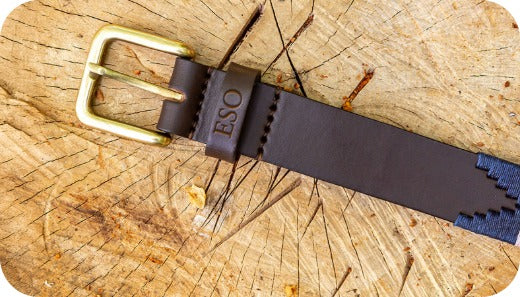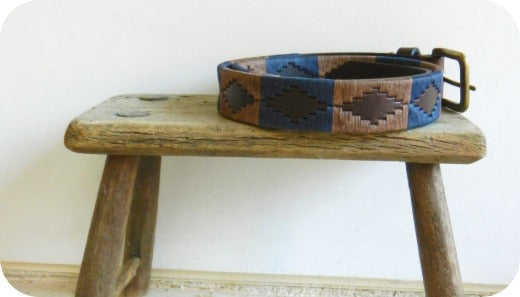The fashion industry, long criticised for its environmental impact, is undergoing a significant transformation. At the heart of this change is the rise of a circular economy in fashion, where clothing, footwear, bags, and accessories are designed, produced, and consumed to minimise waste and maximise reuse. This shift addresses environmental concerns and also fosters innovative business models, and encourages more sustainable consumer behaviours.
What is a circular fashion economy?
Circular fashion reimagines the entire lifecycle of all fashion items. Unlike the traditional linear business models in fashion, where merchandise is produced, used, and discarded, circular fashion focuses on creating products that can be reused, repaired, refurbished, or upcycled.
The foundation of circular fashion lies in the circular design principles, which include:
Designing for longevity
Material selection is critical in the making of the enduring products. However, longevity isn’t always only about using durable material. It also involves creating versatile and adaptable designs through colour, patterns, or adjustable or modular details or so they can evolve with changing needs. For example, pampeano designs handcrafted leather belts in timeless colourways, allowing them to be worn season after season.

Designing for recycling
To design recyclable products, manufacturers need to consciously choose materials like single-fibre textiles that can be easily recycled or repurposed. Think of recyclable fabrics as LEGO bricks: you can take them apart and rebuild them into something new, such as a 100% cotton shirt. Whereas, non-recyclable fabrics, such as cotton-polyester blends, are like glued puzzle pieces, tough to separate.
Similarly, in leather-based fashion design, the choice of tanning affects how the material can contribute to circularity. Vegetable-tanned leather, made entirely from natural materials, is far more easily biodegradable than chrome-tanned leather.
Designing for repairability
Garments and accessories with modular parts, such as replaceable buttons, threads, straps, soles, or zippers, can be mended instead of discarded.
By embedding these principles, brands help the entire fashion industry embrace circularity, ensuring products from head to toe are created with sustainability.
Innovative circular fashion models
Beyond individual brands, the fashion industry is witnessing the emergence of innovative business models that support circularity:
1. Resale and rental services
In rental services, consumers rent garments and accessories for a specified period after which the items are returned, cleaned, and reused. This circular business model turns style into a service. On the other hand, resale business models allow consumers to shop for pre-owned products.
While rental services usually list high-value fashion products like premium designer bags, shoes, or gowns, resale platforms offer both moderate to high-value merchandise.
Retailers like John Lewis and Selfridges offer designer fashion through rental services, giving customers access to high-end garments without the commitment of ownership. This model reduces the need for frequent purchases and extends the lifecycle of the fashion products. Platforms like Vinted and Depop allow purchasing pre-loved goods to extend their lifespan.
Benefits:
-
reduces overproduction and waste.
-
provides consumers with access to various styles without the commitment of ownership.
-
encourages a shift in consumer mindset from ownership to access.
Challenges:
-
requires robust logistics for garment cleaning and maintenance.
-
predicting demand for specific sizes, styles can be challenging, and unsold inventory still carries holding costs.
2. Repairing and upcycling programmes
Many brands offer repair and upcycling programmes that allow customers to send back their purchases to brands or partner workshops for repair or upcycling. Upcycling means innovative redesigning of older clothes or accessories to turn them into a new product (example: patchwork jackets or creative denims).
For example, pampeano offers a lifetime repair programme for its hand-stitched leather belts, dog collars, and other accessories, ensuring that customers don’t have to discard an entire product due to something as minor as a worn buckle or frayed stitching.
Benefits:
-
empowers consumers to reimagine their old possessions.
-
supports local economies by creating jobs in repair, refurbishment, and artisan upcycling.
-
fosters brand loyalty; consumers are more likely to stay with brands offering long-term value.
-
cuts down on carbon emissions and water use associated with new production.
Challenges:
-
consumer education needed
-
not all items are repairable
3. Made-to-order and small-batch production
Studies estimate that 30–40% of garments made each year never sell, with many ending up in landfills or being incinerated. Made-to-order and small-batch production models are powerful contributors to the circular economy as they combat the fashion industry's biggest problem— overproduction. This model is relatively new and has yet to gain as much mainstream attention as the other models.
Benefits:
-
eliminates overstock
-
offers personalised products
-
allows time for the creation of handmade products
Challenges:
-
longer lead times
-
requires efficient production management
From niche to mainstream: how the circular economy is changing the fashion industry
Circular fashion wasn’t always a buzzword. In the early 2000s, second-hand shopping and DIY upcycling were often seen as quirky or budget-conscious, rather than sustainable. Consumers associated circular practices with compromise or frugality.
Over the last decade, however, consumer perception shifted. Thanks to social media influencers and eco-conscious celebrities who embraced ‘pre-loved’ shopping, thrifting as a shopping habit became mainstream and desirable.
Brands responded with collaborations and campaigns that made circular fashion aspirational. For example, Oxfam and Vinted’s “Style for Change” fashion show featured celebrities wearing second-hand outfits, including jackets, handbags, and shoes, proving that sustainability could be glamorous.
Today, what started as thrifting has transformed into a broader circular economy in fashion, where longevity, repairability, and sustainability shape both consumer behaviour and industry strategy.
Pre-loved runway shows: making circular fashion glamorous
Pre-loved runway shows are fashion events where designers, celebrities, and influencers showcase garments that are secondhand, upcycled, or reconstructed. These shows have played a pivotal role in transforming the perception of circular fashion from a niche or frugal choice into a trendy, aspirational statement.
1. eBay & Oxfam Collaboration At The London Fashion Week
In 2024, eBay partnered with Oxfam to host “Style for Change” during London Fashion Week. Celebrities and models walked the runway in entirely secondhand outfits, demonstrating that vintage and upcycled clothing could rival new designs in style and sophistication. The event received widespread media coverage, showing audiences that pre-loved fashion could be glamorous and desirable.
2. The Pre-Loved Red Carpet Movement
Celebrities like Emma Watson, Tracee Ellis Ross, and Billie Eilish have appeared in pre-loved or vintage garments at major award shows. Emma Watson, for instance, has been known to wear upcycled designer outfits, emphasising that sustainability and high fashion can coexist. This celebrity endorsement gives mainstream consumers permission to view thrifting and circular fashion as stylish, high-status, and socially responsible.

Image: Emma Watson wearing a designer dress from upcycled wedding dresses (courtesy: British Vogue)
Looking ahead: fashion’s role in the circular economy
The future of fashion lies in embracing circular design principles. By prioritising longevity, repairability, recyclability, and sustainable materials like single-thread fabrics or vegetable-tanned leather, brands can reduce waste, lower production costs, and create jobs. This holistic approach ensures that clothing, shoes, bags, and accessories are not only stylish and sustainable but also economically valuable for producers and consumers as a whole.





